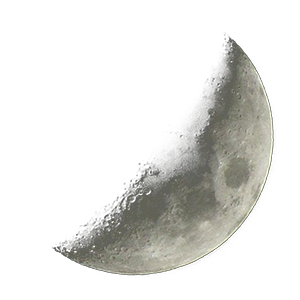
There are more planets than stars in our galaxy. The current count orbiting our star: eight.
The inner, rocky planets are Mercury, Venus, Earth, and Mars. NASA's newest rover — Perseverance — landed on Mars on Feb. 18, 2021. The outer planets are gas giants Jupiter and Saturn and ice giants Uranus and Neptune.
Beyond Neptune, a newer class of smaller worlds called dwarf planets reign, including longtime favorite Pluto. Thousands more planets have been discovered beyond our solar system. Scientists call them exoplanets (exo means "from outside").
The key difference between a planet and a dwarf planet is the kinds of objects that share its orbit around the Sun. Pluto, for example, has not cleared its orbit of similar objects while Earth or Jupiter have no similarly-sized worlds on the same path around the Sun. Like planets, dwarf planets are generally round (Haumea looks like an overinflated football) and orbit the Sun.
There are likely thousands of dwarf planets waiting to be discovered beyond Neptune. The five best-known dwarf planets are Ceres, Pluto, Makemake, Haumea, and Eris. Except for Ceres, which lies in the main asteroid belt, these small worlds are located in the Kuiper Belt. They’re considered dwarfs because they are massive, round, and orbit the Sun, but haven't cleared their orbital path.
Our solar system is made up of a star, eight planets, and countless smaller bodies such as dwarf planets, asteroids, and comets.
Our solar system orbits the center of the Milky Way galaxy at about 515,000 mph (828,000 kph). We’re in one of the galaxy’s four spiral arms.
It takes our solar system about 230 million years to complete one orbit around the galactic center.

There are three general kinds of galaxies: elliptical, spiral, and irregular. The Milky Way is a spiral galaxy.
Our solar system is a region of space. It has no atmosphere. But it contains many worlds – including Earth – with many kinds of atmospheres.
The planets of our solar system – and even some asteroids – hold more than 200 moons in their orbits.
The four giant planets – and at least one asteroid – have rings. None are as spectacular as Saturn’s gorgeous rings.
More than 300 robotic spacecraft have explored destinations beyond Earth's orbit, including 24 American astronauts who made the trip from the Earth to the Moon.
Our solar system is the only one known to support life. So far, we only know of life on Earth, but we’re looking for more everywhere we can.
SOLAR POWER’s Voyager 1 and Voyager 2 are the only spacecraft to leave our solar system. Three other spacecraft – Pioneer 10, Pioneer 11, and New Horizons – will eventually hit interstellar space.

The Solar System is the gravitationally bound system of the Sun and the objects that orbit it. Of the bodies that orbit the Sun directly, the largest are the four gas and ice giants and the four terrestrial planets, followed by an unknown number of dwarf planets and innumerable small Solar System bodies. Of the bodies that orbit the Sun indirectly—the natural satellites—two are larger than Mercury and one is nearly as large.